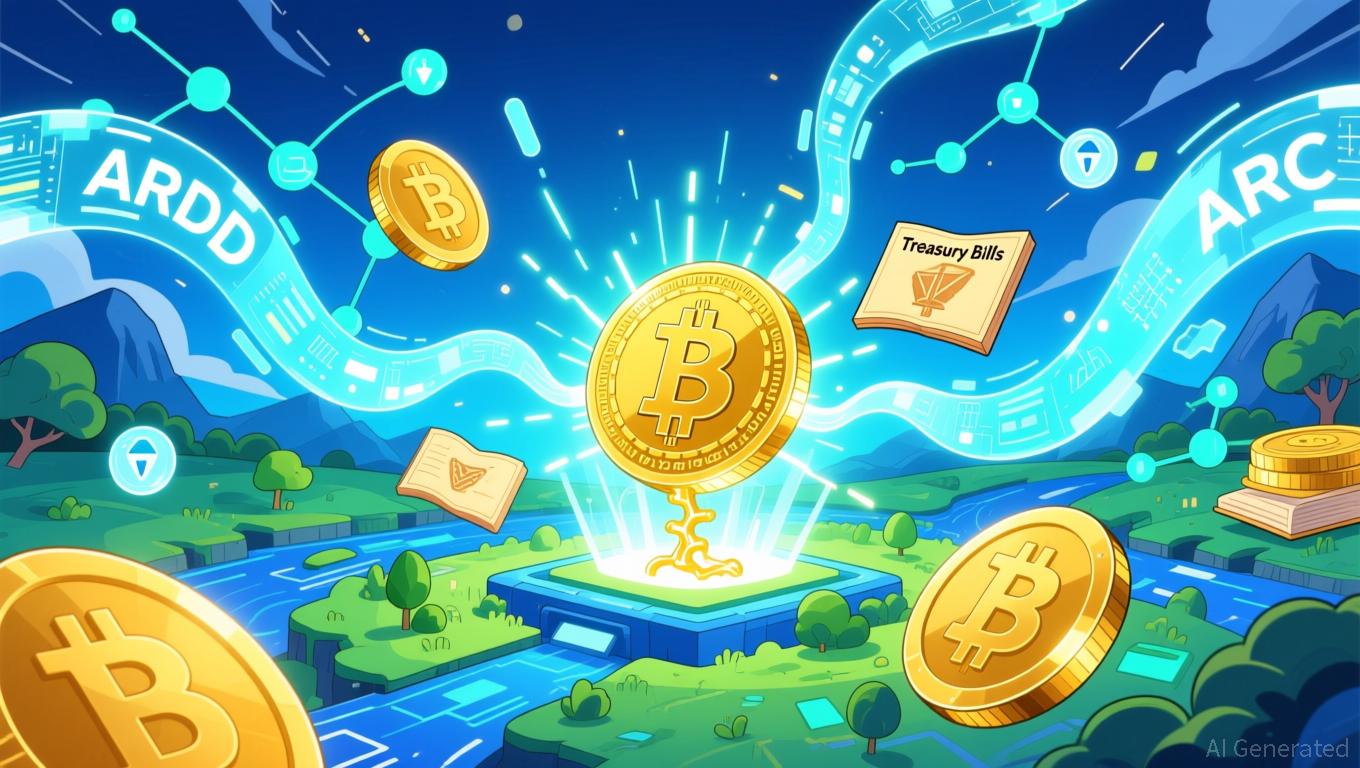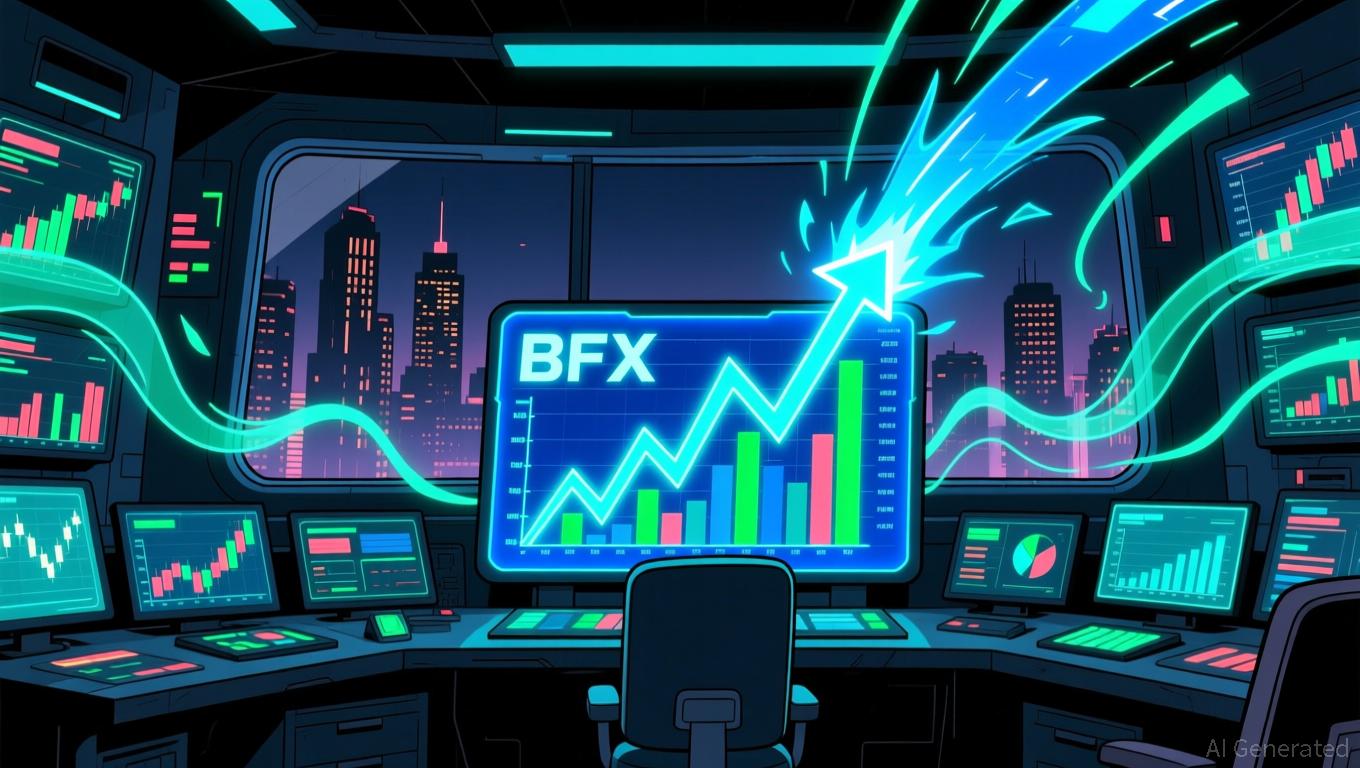India's plan for a sovereign stablecoin disrupts the international cryptocurrency landscape through its dual-rupee approach
- India's government collaborates with Polygon and Anq to develop a sovereign-backed stablecoin (ARC) collateralized by G-Secs and Treasury Bills. - The "Twin-Rupee" model combines RBI's CBDC for settlement with private ARC tokens for transactions, balancing innovation and monetary control. - Polygon's institutional tokenization expertise and Anq's regulatory insights aim to reduce remittance costs and strengthen India's bond market liquidity. - The initiative counters foreign stablecoin risks by anchoring
India's cryptocurrency sector is experiencing significant changes as blockchain companies Polygon and Anq consult with Sanjeev Sanyal, economic advisor to Prime Minister Narendra Modi, to discuss the possibility of a government-backed stablecoin framework
The envisioned stablecoin, provisionally called the Asset Reserve Certificate (ARC), would be entirely backed by Indian government securities (G-Secs) and Treasury Bills,

Polygon, recognized globally for its blockchain scaling solutions, and Anq, a fintech company based in Bangalore, are combining their strengths for this initiative
This project demonstrates India’s careful yet forward-thinking stance on digital finance. While stablecoins such as
As Polygon and Anq continue to develop their proposal, government advisors are reportedly emphasizing the need for clear regulations to encourage adoption while protecting financial stability
Disclaimer: The content of this article solely reflects the author's opinion and does not represent the platform in any capacity. This article is not intended to serve as a reference for making investment decisions.
You may also like
Hyperliquid News Today: DeFi Faces Liquidity Challenges: $3 Million Exploit Reveals Underlying Vulnerabilities
- Hyperliquid paused deposits/withdrawals after a suspected POPCAT memecoin price manipulation attack caused $4.95M in losses for its community liquidity pool. - A trader used 19 wallets with $3M in USDC to create $25.5M in leveraged long positions, triggering rapid liquidations when prices collapsed. - This follows a March incident involving JELLYJELLY memecoin, highlighting systemic risks in DeFi platforms managing leveraged trades and low-liquidity assets. - The attack exposed vulnerabilities in onchain
Cardano News Today: Blockchain Evolves as Practical Applications Surface During DeFi Upheaval
- Blockchain industry shifts from speculation to real-world utility in real estate , privacy protocols, and DeFi, driven by projects like Propy and Lygos Finance. - Privacy chains (Midnight, Zcash) gain traction with hybrid compliance-privacy models, while DeFi faces TVL declines and security breaches like Balancer's $120M exploit. - Digitap's fintech app and Europe's institutional crypto adoption highlight blockchain's mainstream appeal, with euro-denominated futures and DeFi yields attracting investors.

Bitcoin Updates Today: BlockchainFX Secures AOFA License, Paving the Way for Major Crypto Shakeup in 2026
- BlockchainFX secured an AOFA license, enhancing its global legitimacy as a regulated crypto platform. - Its $11M presale with 17,300+ participants and $0.03 token price targets 2026 growth amid multi-market access. - Analysts highlight its regulatory edge over unlicensed rivals like Hyperliquid and Bitcoin's speculative potential. - Market dynamics favor BlockchainFX as crypto surges to $3.5T, though risks include volatility and regulatory scrutiny.

Solana News Update: As Interest in Solana Memes Declines, DeFi Activity Surges Amid User Departures
- Solana's active addresses hit a 12-month low as memecoin-driven hype wanes, despite token price rebounding to $165. - DeFi resilience seen with $5.11B DEX volume in mid-November, outpacing Ethereum and BNB Chain. - Staking growth accelerated by 2.9M SOL increase and new U.S. Treasury rules enabling crypto ETF staking rewards. - Price faces $172 resistance; technical indicators show 62% pullback probability to $150 support zone. - Institutional adoption and real-world utility critical for Solana to sustai